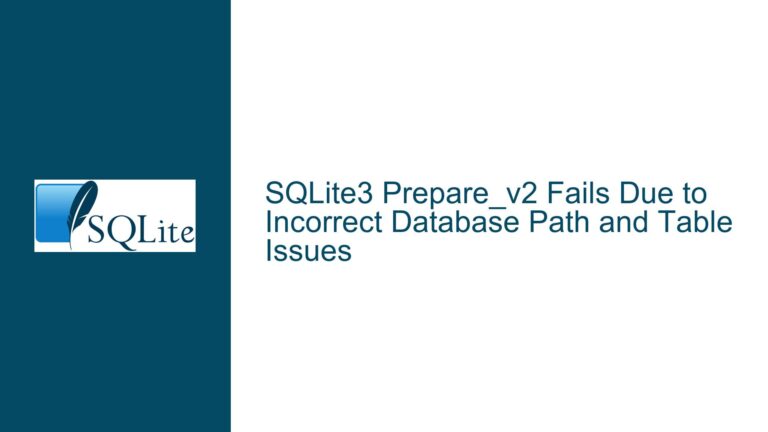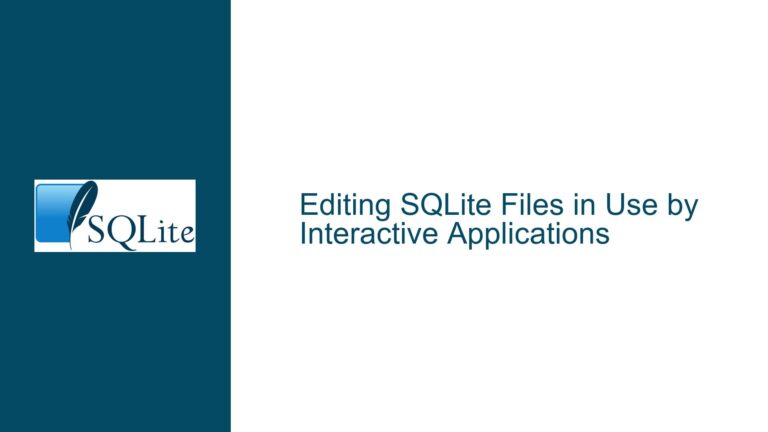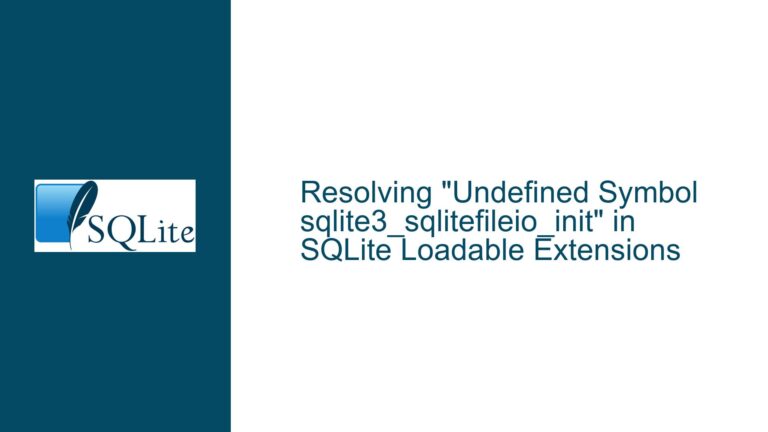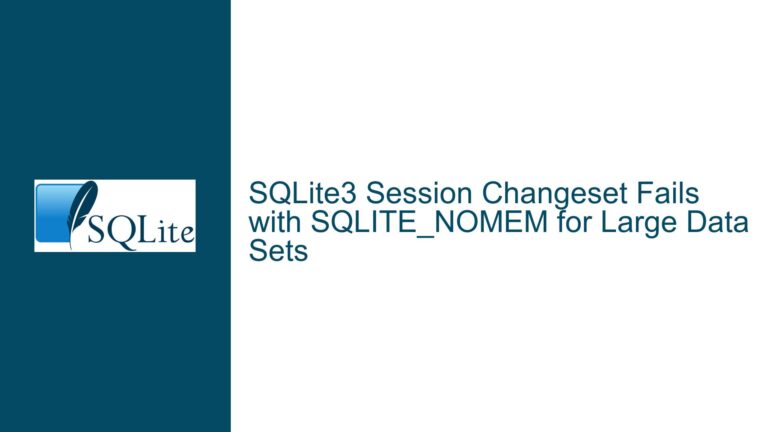Integrating Math Functions into SQLite: Challenges and Solutions
SQLite’s Lack of Native Math Functions in Core Amalgamation
SQLite, renowned for its lightweight and embedded database capabilities, has consistently evolved to include advanced features such as Common Table Expressions (CTEs), Window Functions, and JSON support. However, one notable absence in its core amalgamation is a comprehensive suite of mathematical functions. While SQLite excels in handling structured data and document storage, its limited native support for mathematical operations, such as trigonometric functions, logarithmic calculations, and statistical computations, has been a point of contention for users in scientific, engineering, and educational domains.
The absence of these functions is not due to a lack of demand but rather a combination of factors, including the niche nature of mathematical operations in general database usage, concerns about binary size bloat, and the maintenance overhead associated with integrating and testing such functions. The extension-functions library, a popular third-party solution, has filled this gap for over a decade by providing a public-domain implementation of advanced math functions. However, this library remains separate from the official SQLite distribution, requiring users to manually compile and integrate it into their projects.
The integration of math functions into SQLite’s core amalgamation would not only enhance its utility for specialized use cases but also align it more closely with the SQL:2016 standard, which includes trigonometric and other mathematical functions. This alignment would improve SQLite’s standing in comparative analyses and make it a more versatile tool for teaching and learning SQL. However, the path to integration is fraught with technical and logistical challenges, including licensing considerations, testing requirements, and the potential impact on SQLite’s lightweight footprint.
Niche Use Cases and Maintenance Overhead
The primary barrier to integrating math functions into SQLite’s core is their perceived niche applicability. While mathematical operations are indispensable in fields like data analysis, scientific computing, and engineering, they are rarely used in more common SQLite applications, such as document storage or mobile app backends. This limited demand makes it difficult to justify the additional complexity and maintenance burden associated with including these functions in the official distribution.
Moreover, the extension-functions library, which currently provides these capabilities, is maintained independently of the SQLite project. Integrating it into the core would require the SQLite development team to assume responsibility for its maintenance, including addressing potential security vulnerabilities, ensuring compatibility with new SQLite versions, and developing a comprehensive test harness. This would represent a significant increase in workload for the team, particularly given the relatively small user base that would benefit from these functions.
Another concern is the impact on SQLite’s binary size. One of SQLite’s key strengths is its compact footprint, which makes it ideal for embedded systems and resource-constrained environments. Adding a full suite of math functions could significantly increase the size of the binary, alienating users who prioritize minimalism and efficiency. While pre-compiled binaries with all features enabled could be offered as an alternative, this approach would require additional infrastructure and effort to maintain.
Strategies for Enabling Math Functions in SQLite
Despite these challenges, there are several strategies that could facilitate the inclusion of math functions in SQLite without compromising its core principles. One approach is to modularize the math functions, allowing users to selectively enable or disable them during compilation. This would preserve SQLite’s lightweight nature while providing flexibility for users who require advanced mathematical capabilities. The existing extension-functions library could serve as a template for this modular implementation, with the SQLite team adopting and maintaining a streamlined version of the code.
Another option is to leverage SQLite’s extension mechanism, which allows users to load external libraries at runtime. By officially endorsing and distributing the extension-functions library as a supported extension, the SQLite team could provide users with access to math functions without incorporating them into the core amalgamation. This approach would minimize maintenance overhead while still meeting the needs of specialized users.
Finally, the SQLite team could collaborate with the maintainers of the extension-functions library to integrate select functions into the core distribution. This would involve a careful evaluation of the most commonly used functions, ensuring that only those with broad applicability are included. By focusing on high-impact functions, such as trigonometric operations and basic statistical calculations, the team could strike a balance between functionality and efficiency.
In conclusion, while the integration of math functions into SQLite’s core amalgamation presents significant challenges, it is not an insurmountable goal. By adopting a modular approach, leveraging the extension mechanism, or selectively integrating high-impact functions, the SQLite team can enhance the database’s capabilities without compromising its core strengths. These efforts would not only benefit specialized users but also reinforce SQLite’s position as a versatile and forward-thinking database solution.






